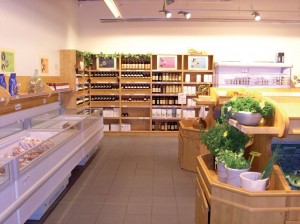The PSADER PENAP program calls for new projects to protect farming lands around Lyon!
This program is a public policy toolkit defining a scope for actions in coordination with several “urban planning authorities”. It is based on a diagnostic of the territory and a common funding. From 2010 to 2016, €4 million are dedicated to support projects and concrete actions led by NGOs, farmers groups or local authorities. The projects must follow the 3 objectives: (1) to maintain the farming and natural areas around Lyon (2) to improve links between urban and rural communities (3) to protect and to promote natural spaces, biodiversity and resources.
| 3 strategic priorities | Examples of completed actions |
| (1) Maintain a periurban sustainable agriculture |
Provide local food to schools canteens: work on public procurement, on the menus’ planning and support the farmers to reach this market (regroup, collective offer, etc…) |
|
Support the creation of collective points of sale, especially inside the city limits. Lately, some producers have been supported to reuse an ancient public covered market (Halle de la Martinière: http://www.lyoncapitale.fr/Journal/Lyon/Politique/Ville-de-lyon/La-nouvelle-Halle-de-la-Martiniere-post-2013) |
|
|
Support the creation of an online map of all local street markets in the urban area. This tool gives information such as address, schedule, administrative rules, equipments, facilities, advertising, etc. (http://www.geomarches.com/) |
|
| (2) Improve links between urban, periurban and rural |
Set up a mobility plan for farm vehicles: work with the local roads department to spot problem areas and define a traffic plan |
|
Develop a communication plan to highlight the agricultural jobs and the periurban situation |
|
| (3) Protect and promote natural and farming areas, water resources, biodiversity and landscapes, prevent soil erosion or flood risks |
Partnership with the local authorities for rural estate management (SAFER). According to the law, they are allowed to buy any piece of agricultural land when it’s sold, in order to keep it as farmland (pre-emption). That’s why they have a great influence on the agricultural land prices market. |
|
Maintain and preserve the “green corridor” |
|
|
Support the conversion of farmers to adopt environmentally friendly practices |
Especially since the late 70’s, the way to consider the non-built land did evolve. From potential building areas, the farmland became a guarantee of quality of life and environment protection. More recently, beside the economic impact of agricultural companies (jobs), the mention of “nourishing areas” appeared in the local authorities’ rhetoric.
The PSADER-PENAP preserves natural and farming lands on a long term perspective. It supports agricultural economy and gives to agriculture a real place in urban planning. This program is able to set the structure of a metropolitan agricultural project and it might be upscaled regarding the current match between existing tools and the evolution of the speech towards sustainable food.
